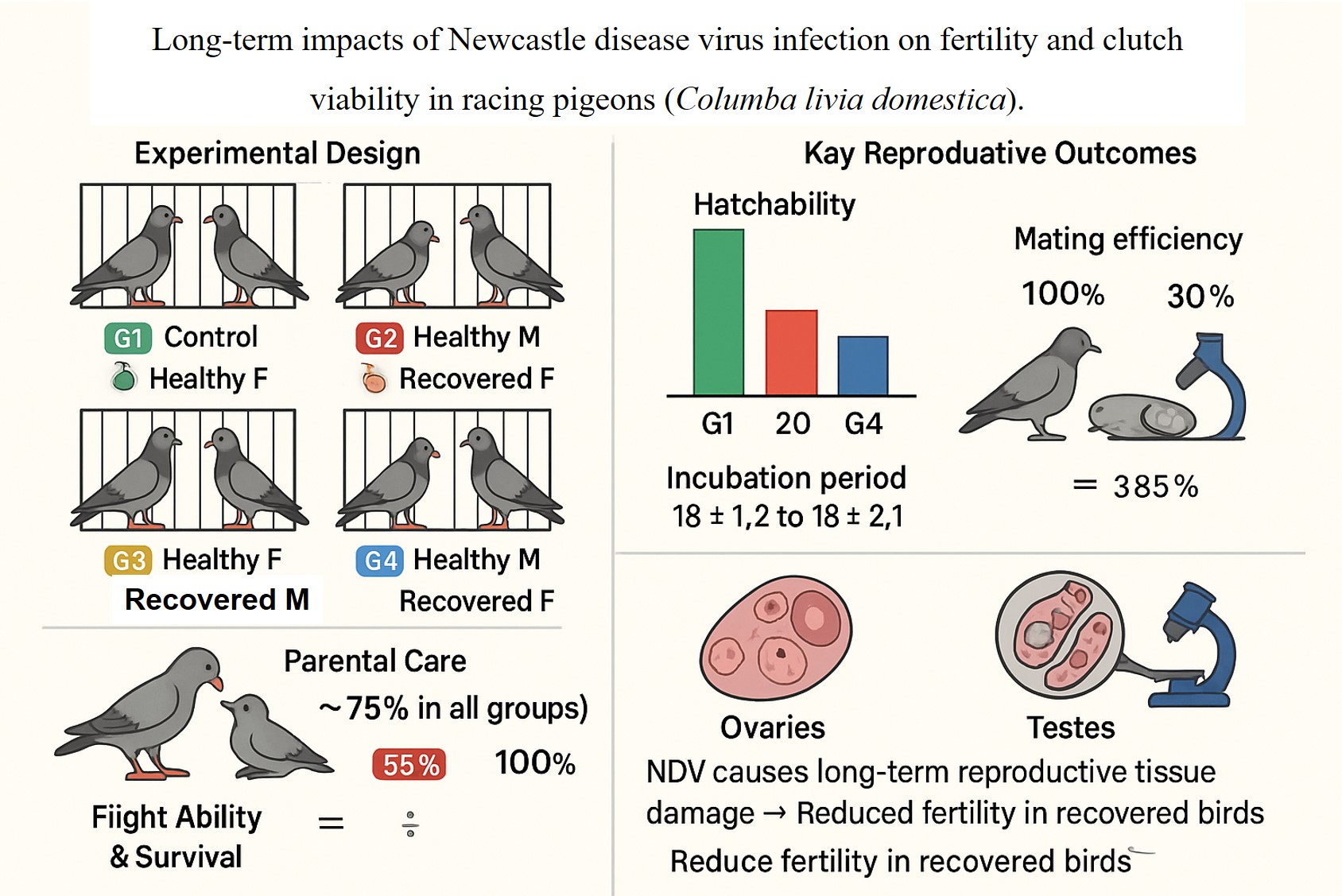Long-term impacts of Newcastle disease virus infection on fertility and clutch viability in racing pigeons (Columba livia domestica)
Keywords:
Newcastle disease, reproductive performance, racing pigeonsAbstract
This study investigated the impact of Newcastle disease virus (NDV) on the reproductive efficiency of racing pigeons (Columba livia domestica). A total of 160 pigeons (1–3 years old, 400–550 g) were selected based on clinical signs of NDV, confirmed by RT-PCR. Birds were divided into four groups: G1 (control, 20 healthy females and 20 healthy males), G2 (20 recovered females and 20 recovered males), G3 (20 healthy females and 20 recovered males), and G4 (20 recovered females and 20 healthy males). Behavioral analysis revealed significant differences in reproductive parameters. Hatchability rates were 95%, 20%, 65%, and 55% for G1, G2, G3, and G4, respectively, with incubation periods of 18 ± 1.2 to 18 ± 2.1 days. Squab acceptability among parents remained stable (~75% in all groups), and squab survival and flight ability were unaffected. However, parental care ability was significantly lower in recovered groups (55% in G2 vs. 100% in G1). Mating efficiency in G1 (100%) was significantly higher than in recovered pigeons (30%–85%). Histopathological examination of the reproductive organs in recovered pigeons revealed degeneration of ovarian follicles, including shrinkage, necrosis, and granulosa and theca cell disintegration. Testicular tissue exhibited seminiferous tubule collapse and detachment of spermatogonia from the basement membrane, compromising sperm production. These findings indicate that NDV infection causes long-term histopathological damage to reproductive tissues, reducing fertility in recovered pigeons. Further research is needed to explore potential therapeutic strategies to mitigate these effects. diseases.

Downloads
Published
Issue
Section
License

This work is licensed under a Creative Commons Attribution-NonCommercial-NoDerivatives 4.0 International License.
All articles in the World Journal of Experimental Biosciences are published under the terms of the Creative Commons Attribution 4.0 International License (CC BY 4.0), which permits unrestricted use, distribution, and reproduction in any medium, provided the original work is properly cited.



